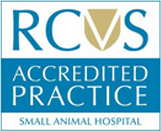Skin disease is one of the most common complaints in the veterinary practice. The skin is the largest organ in the body and unlike other internal organs this organ can be visualised. This means problems can be identified rapidly.
There are a number of different types of skin disease, much more than can be covered below. Below we focus on allergic skin disease as this is incredibly common in dogs, and the treatment options have advanced recently compared to previous treatments.
Which dogs are susceptible to Allergic Skin Disease?
Any dog can be affected by allergic skin disease; however certain breeds are overrepresented such as West Highland White Terriers, Spaniels, Bull dogs and Bull terriers.
What causes allergic skin disease?
Allergies can be present from a young age or can develop over time.
Allergies can be against certain food types such as wheat or rice or proteins such as chicken or beef.
Pollen allergies can also be very common, as well as allergies to mites such as flea saliva and house dust mites.
Contact allergies can happen if a chemical is used such as a cleaning product or a type of fabric makes contact with a dogs’ skin causing a local irritation.
What are the symptoms?
All patients will react differently to their allergy, so symptoms vary from patient to patient.
Most Common Symptoms
- Pruritus (itching)
- Red papules (spots) in affected area, normally under the abdomen and in the armpits and groin regions
- Red raised areas of skin and scratch marks
- A moist yellow discharge on the surface of the skin can indicate superficial infection
- Yellow pustules (infected spots) can indicate deeper infection
- Shaking head and inflamed ears and discharge from the ears which may smell (see the handout on ear disease in dogs)
- Licking excessively, usually the feet are most affected
- Some dogs may sneeze and have red eyes with some discharge
- Vomiting, diarrhoea and weight loss may be present if food allergies are severe.
How is Allergic Skin Disease diagnosed?
Examination
Examination by your Vet is very important as some skin diseases can be secondary to systemic disease so a thorough nose to tail health check is recommended. In some cases, the Vet will be able to make an assessment in the consultation and recommend treatments. However often further tests are needed to clarify the condition and to investigate the cause.
If the presentation is a one off with no history of other skin disease, simple treatments are often started before any further investigations; however, if the patient has had more than one episode of skin disease further investigations will be warranted as knowing the trigger for the condition can lead to preventative measures and reduce the need for treatments.
Laboratory Tests
Samples from the skin may be needed to identify external parasites, bacterial infections and tumours. Samples may be taken in several ways:
- Tape strips: this is where a piece of cello tape is pressed over the affected skin which will remove the surface contents which can be examined under the microscope. Mites can be seen as well as types of bacteria, yeast and cells.
- Skin scrapes: this is where a scalpel blade is used to scrape the surface of the skin to remove a thin layer to be examined under the microscope. This can look for deeper burrowing mites such as Demodex as well as bacteria, cells and yeasts.
- Skin biopsies: this is where a wedge of skin is taken under sedation or anaesthesia and sent to the external laboratory for analysis. This can identify the type of inflammation present in the skin and if there are any tumour cells present.
Other forms of skin disease must always be ruled out before a diagnosis of allergic skin disease can be made. Some hormonal conditions can lead to skin disease so other blood tests may be required.
Allergy blood test: this is where a sample of blood is taken from your pet and sent to the external laboratory for analysis. There are two stages to this test, and it may take a few weeks to get all the results through. Initially an allergy screen will be carried out. This will tell us if your pet is allergic to food, flea saliva, yeasts, house dust mites and moulds, or pollens.
Once we have these results back, we can then expand the appropriate panels to identify exactly which pollens, food, mites or moulds your pet is allergic to. Your vet will more than likely have taken enough blood from your pet to run these additional tests without taking another blood sample. They will let you know if not.
What are the treatment options?
General Treatments
Clipping and cleaning areas of inflammation and infection on the skin is important. You can use saltwater for this, or your vet may prescribe an antiseptic wash depending on the severity. It is important to ask your vet before using any human antiseptics or creams as dog and cat skin is quite different to our own and these products may cause more inflammation and delay healing.
Preventing the patient from licking or scratching is important to break the itch scratch cycle. The more a patient itches or licks the more inflamed the skin becomes and the itchier it feels therefore the patient will lick more and more. A buster collar can be provided to prevent itching, or socks can be placed on the feet or a t-shirt on the body to prevent the patient from getting to the area. Socks and t-shirts must be changed regularly (at least daily but more frequently if there is discharge) and kept clean. Stopping your pet from licking or scratching in the short term is beneficial once treatment is started, however every effort should be made to prevent the patient from feeling itchy. It is not ethical to continue to cover or allow a pet to wear a buster collar long term if no other treatment has been started. Please talk this through with your vet if you have any concerns.
Treatment of underlying infection or other skin disease must be carried out primarily. Antibiotics may be needed which can come in a cream form or a tablet form depending on the severity. It is always preferable to use topical treatments to prevent systemic side effects and reduce the likelihood of your pet developing a resistant bacterial infection. Parasite treatment must always be up to date and effective.
Flea allergies:
Patients that are allergic to flea saliva do not need to be riddled with fleas to develop a problem. It only takes one flea bite to set off an allergy. Therefore, using monthly preventative flea treatment is essential. It is also advisable to use a household treatment every 6months or so to limit the likelihood of your pet coming into contact with fleas. In multi pet households it is essential to treat ALL pets in the house with an appropriate flea product and do them all the same time every month to reduce the chances of them passing the fleas between them.
Food allergies:
If your pet has a food allergy it may only take one mouthful of food to set them off. Therefore, a strict diet is essential. Eliminate the food item your pet is allergic to and you should see an improvement within 6-12weeks. It is very important to check the ingredients on all packets of food, remembering treats count as well.
Pollen allergies:
Some patients can be managed with regular cleaning and wiping of the feet and tummy after walks to remove the allergens from the coat. Avoiding long grass or areas where a certain pollen is (e.g. type of tree etc.) However, it can be difficult to avoid pollens especially if they are allergic to a type of tree or grass which is everywhere! Immunotherapy can be indicated in this case. See discussion below.
Food mites and mould allergies:
If you are feeding your pet dry food, there will always be mites and moulds present that feed off the crumbs. These like to live in the bottom of a food bag or food bin if you use a bin to store your food. Ways to avoid this would be to buy small bags that do not sit around for too long. Do not use food storage bins but keep them in the bag. Wipe your dog’s muzzle after eating to remove any dust residue from the skin around the mouth. Change to wet food. Immunotherapy is another option. See discussion later.
Immunotherapy:
This is where a lab will make up a vaccine from the known allergens for your pet. The vaccine will be injected into your pet starting from a low dose every 2weeks and building up to a higher dose once a month-long term. These injections stimulate the body to mount an immune response to be able to cope with the allergy better. It is ideal to start the injections when your pet is well, maybe in the winter before they become sensitive to the allergy as it can take up to a year to mount a good response. Not all patients will respond to the treatment, some patients will respond partially, so their symptoms will become easier to control, and some patients this will be a cure. This can be made up for flea allergies, yeast allergies, pollen allergies and mite and mould allergies.
Topical medications:
- Isaderm: This is a cream containing steroid and antibiotics, which can be used on areas of superficial infection and inflammation. It should not be used for more than 5 days unless your vet advises you otherwise as long-term steroid treatment on the skin can cause thinning of the skin.
- Hibiscrub (chlorhexidine) or dilute iodine: these are antiseptic washes for dogs and cats which your vet may prescribe in preference to saltwater baths. Cleaning and drying affected areas twice daily can help in managing skin conditions.
- Shampoos: Several shampoos are available for dogs. Medicated shampoos can be very helpful to wash affected areas with on a daily basis. Malaseb is an anti-fungal and antibacterial shampoo which is particularly good for some patients; care should be taken not to use on the whole body too frequently to avoid drying out the skin. Always seek a vets’ advice on how often they would recommend bathing your pet. Sebomild is a soothing shampoo which can be used on the whole body on a regular basis. Other shampoos will aim to reduce grease or dandruff; not every shampoo will be suitable for every patient so ask your vet which shampoo would suit your pet the best.
Other oral medications:
- Antihistamines can be helpful to reduce the irritation for your pet. Several types are available for pets, please check with your vet before starting any medications, some human medications can be used but NOT ALL.
- Apoquel: this is an immune modulating medication which modulates the immune system to suppress any reaction to allergies. It can be very helpful for red and inflamed skin or ears to reduce the redness and the swelling. In some cases, it can be used long term to control allergies, however topical treatments are always preferred to long term medication due to the potential for side effects. If you pet experiences any vomiting or diarrhoea or other unwanted side effects whilst taking this medication, then stop the medication and speak to your vet.
- Steroids (prednisolone): These medications can be used to treat severe inflammation and irritation either short term or long term. Again, speak to your vet about the long term side effects. Steroids can cause an increase in the thirst, urination and appetite, and as they are broken down through the liver will cause the liver to work harder which may lead to problems in the future. Steroids can predispose your pet to diabetes, especially in cats or overweight animals. Follow your vets’ advice when using these medications.
- Cytopoint: is different from traditional drugs that treat itching. It is a biological therapy—a type of non-pharmaceutical treatment that works like your dog’s immune system. It contains engineered antibodies very similar to a dog’s natural antibodies. Antibodies are what an animal’s immune system uses to defend the body against infection or disease. In this case, the antibodies in cytopoint have been designed to specifically target and neutralize one of the main proteins that sends itch signals to your dog’s brain. This helps reduce scratching, so the skin has a chance to heal. Cytopoint is an injection that your veterinarian gives your dog once every 4 to 8 weeks, as needed.
- Skin supplements: a balanced skin supplement such as Nutramega can be very helpful to keep the skin healthy and to also help it repair after damage. www.nutravet.co.uk/nutramega
Any patient on long term medication will need to be under the care of a veterinary surgeon to ensure the medication is still appropriate and is causing no adverse reactions. A minimum check of every 6 months is needed; however, your Vet may wish to check them more frequently depending on their condition.
What is the prognosis long term?
A lot of patients with allergic skin disease will have this for life. Long term management is essential.
Being pro-active and pre-empting flare ups can help reduce the amount of medication needed to treat your pet. This means knowing the triggers (time of year, certain foods/areas etc.).
Using shampoos and maintaining a healthy coat can help.
Allergic skin disease can be very frustrating as there is not always a complete cure for it. Having regular communication with your vet about different management options is important in getting a balance between managing the condition and not keeping them on unnecessary medications.
Some pets will be fine without medication over the winter period if pollens are the problem, trials can be performed to see what is needed when.














